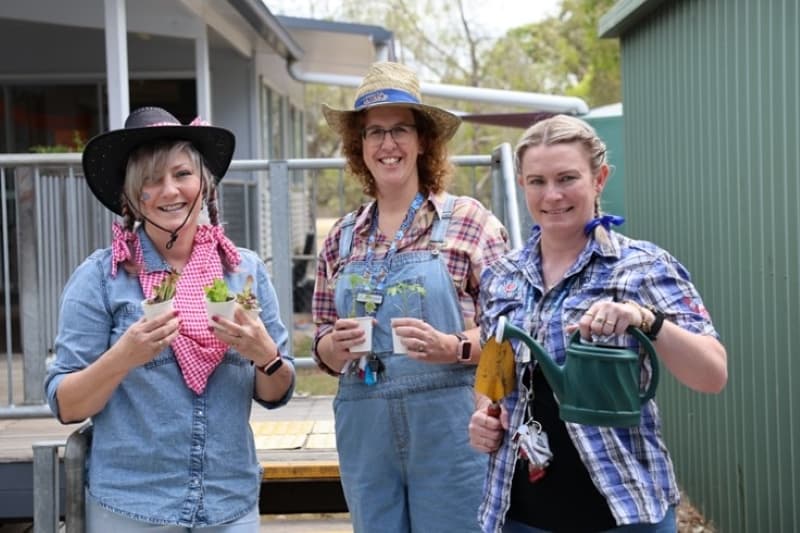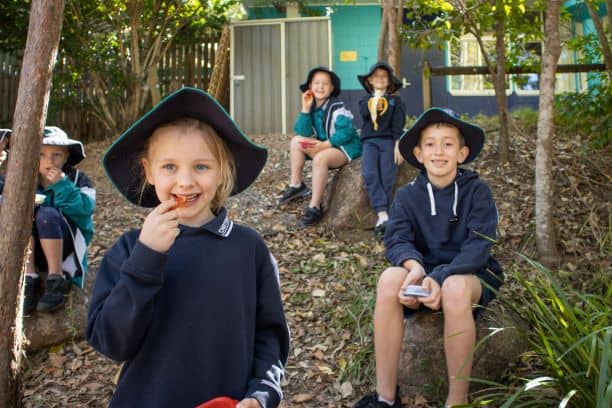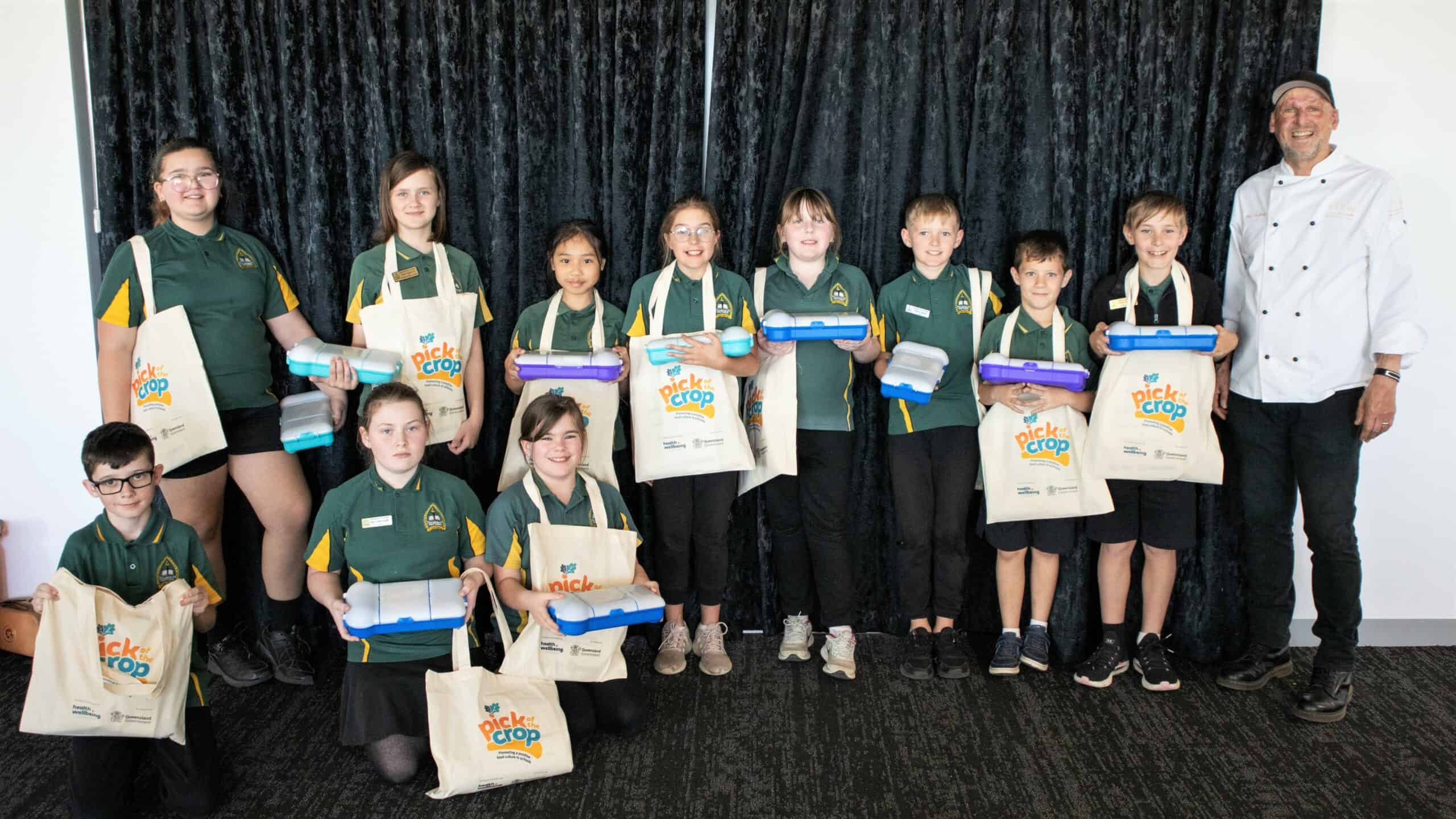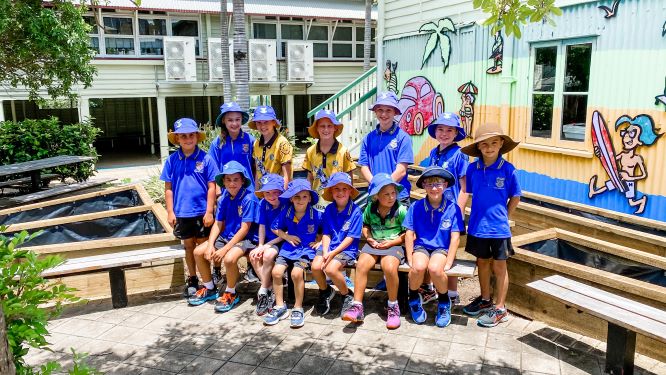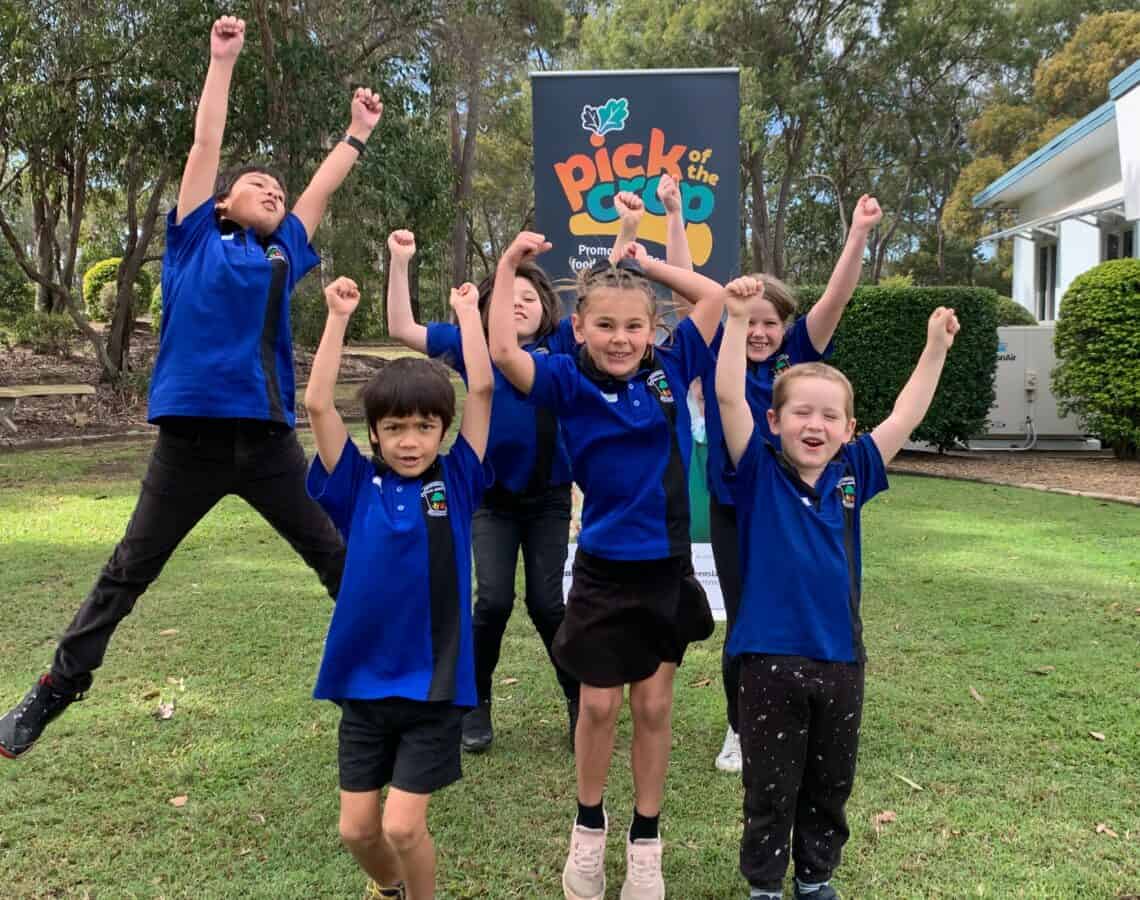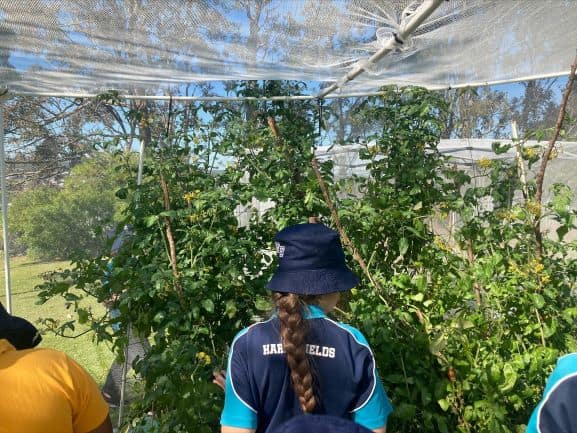“Slow food” – A mindset to live by
- Eat healthy and seasonal.
- Reduce food miles, waste and chemicals.
- Look after the land.
CC and Greg are almost 100% self-sufficient – they buy pantry supplies and eggs, but little else. CC’s kitchen produces 105 products – pickles, preserves, jams, cordials, etc.
Sustainability focus
Across their farm, features include solar panels, water capture (dams), and spoon drains that Greg dug with the tractor to prevent flooding of the kitchen. They rely on native bees for pollination, and they compost food waste, and rotate crops so pests and diseases don’t build up in the soil.
Learning about plants and produce
The climate and seasons determine what we grow and when – e.g. apples grow well in the cooler states like Tasmania, but not so well in Queensland.
Students saw many plants in the garden, including rosellas which go into CC’s signature rosella jam. We tasted edible leaf hibiscus leaves, to mixed reactions! “They make great San Choy Bow” said CC.
The vegetable is a staple of Islander cuisine and Greg propagates edible leaf hibiscus simply by planting stick cuttings.
Other plants we saw and learned about include jam melon, younger berries, Yellowjack chilli, guava, cumquat, pumpkin, dill, garlic and sunflowers as well as flowering plants to attract bees. We saw young cape gooseberries, too – they grow 1000 plants each year and harvest 100’s of kilo of fruit for jam.
Farmer Joe and the greenhouse
Greg’s dad “Joe” is known to the Woolooga students, as he taught them about Anzac Day this year.
He led a session in the greenhouse, including hands-on potting up of bulb fennel seedlings. Each student took their pot plant home to water for a few days then transplanted into the garden, for a spring harvest.
The greenhouse protects young, tender plants from frost and harsh sunlight – as well as pests like birds and moth caterpillars.
Summing up
We sat down to enjoy morning tea (see CC’s Purple Power Balls Recipe), and had a Q+A.
It was really impressive how many plants and fruits the students remembered the names of (more than Keith did!) and the wise questions they asked CC and Greg.
Ms Castle wrote some of the new words as the students recorded notes in their workbooks.
CC’s Purple Power Balls Recipe
(Makes about 15 balls)
Ingredients
- ½ kg purple sweet potato (aka Hawaiian), scrubbed
- 2 tbsp butter (or substitute)
- Desiccated coconut, to coat
Method
- Spray coconut oil onto the sweet potato.
- Wrap the sweet potato in baking paper and bake until very soft.
- When cool enough to handle, remove the peel.
- Blend together thoroughly with butter.
- Roll about one teaspoon of mixture into a ball and roll it in desiccated coconut.
- Repeat until all mix is balled.
- Refrigerate and serve cold.
Variations – you could also add: finely crushed Macadamias or finely chopped dried apricots, before rolling into balls.




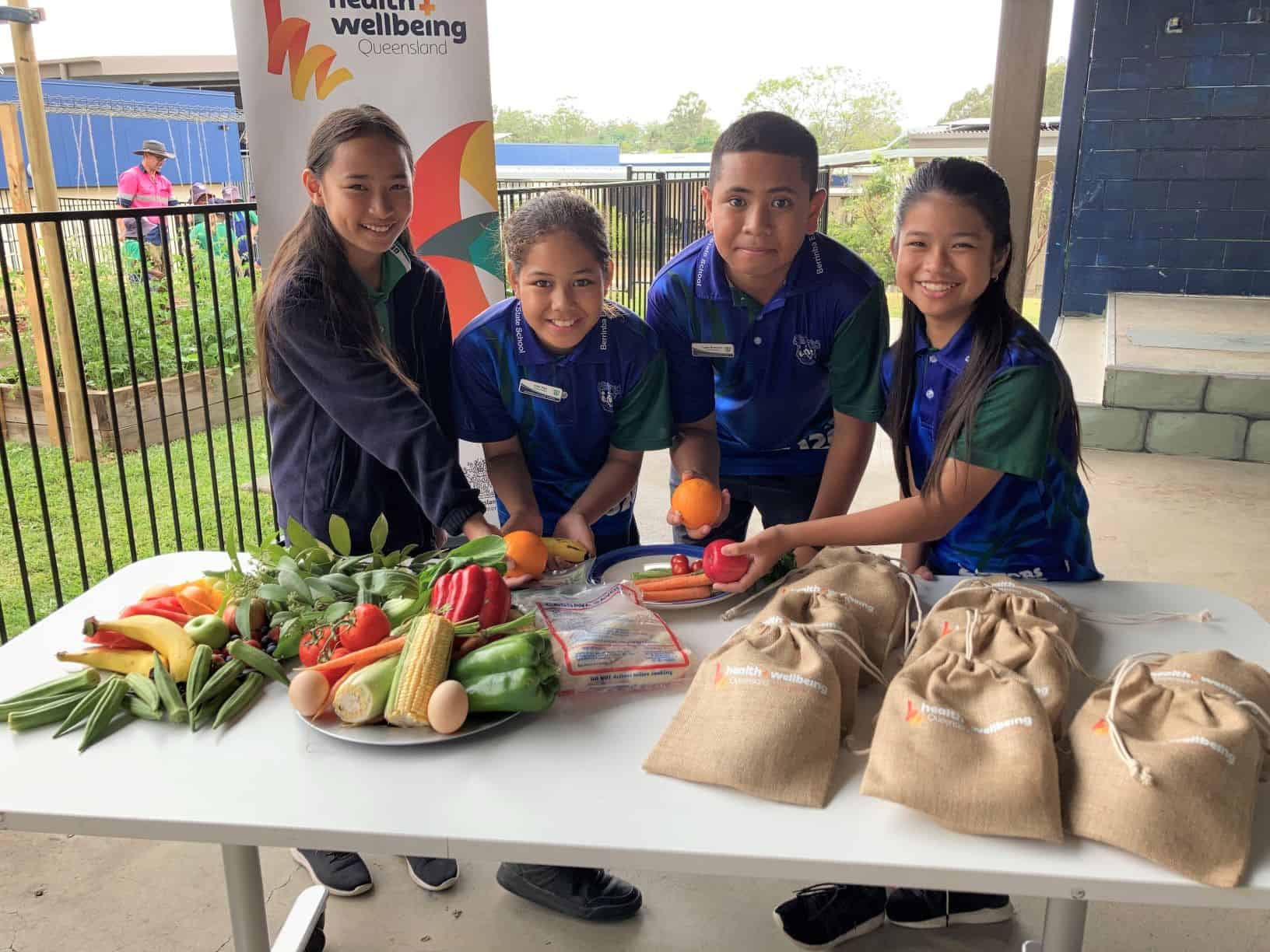

 Celebrations
Celebrations This has become more than just a place to grow vegetables; it’s a hub for learning and overall wellbeing. The garden serves as a multifunctional space, offering students in all grades with a hands-on learning environment where they can explore fruits, vegetables, and nutrition.
This has become more than just a place to grow vegetables; it’s a hub for learning and overall wellbeing. The garden serves as a multifunctional space, offering students in all grades with a hands-on learning environment where they can explore fruits, vegetables, and nutrition.














